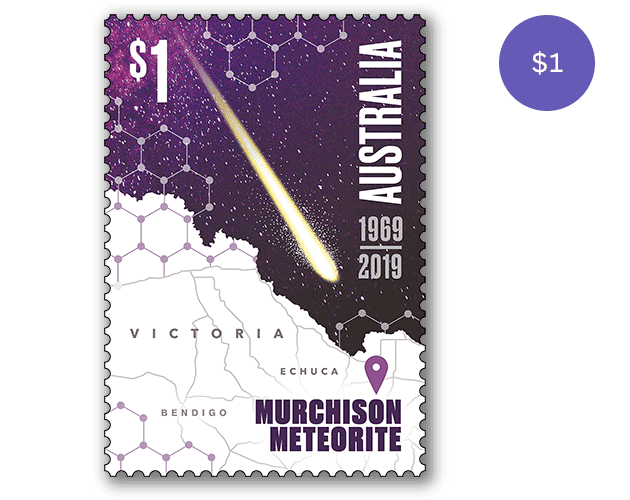
Murchison Meteorite: 1969-2019 stamp
The Murchison Meteorite: 1969-2019 stamp was designed, by Tim Hancock of Backpack Creative.
On Sunday, 28 September 1969, at about 10:50am, a meteorite shower fell around the town of Murchison, some 160 kilometres north of Melbourne, Victoria. Following the explosion and sonic boom, several hundred small meteorite fragments fell around the township. At least 100 kilograms of these fragments were recovered from an area of approximately 11 kilometres long by 3.2 kilometres wide.
The Murchison meteorite belongs to a rare class of meteorite called a carbonaceous chondrite. These meteorites retain chemical properties from their time of formation some 4.56 billion years ago. Murchison contains an abundance of organic compounds including over 90 amino acids, the building blocks of our DNA, many of which are not found on Earth. The meteorite is also a rich source of pre-solar mineral grains, which formed in star systems and exploding star supernovae events from billions of years before our Sun and solar system formed. Understanding the composition of these grains helped to determine how the various elements of the Periodic Table have formed within stars.
About 80 kilograms from the Murchison meteorite are held in scientific collections in Australia and throughout the world, with significant collections at Museums Victoria in Melbourne. Due to its rarity and the amount of material recovered, Murchison is one of the most extensively studied meteorites.
| Issue date | 10-September-2019 |
| Issue withdrawal date | 31-March-2020 |
| Denomination | 1 x $1 |
| Stamp design | Tim Hancock, Backpack Creative |
| Product design | Jason Watts, Australia Post Design Studio |
| Paper: gummed | Tullis Russell |
| Printer | RA Printing |
| Printing process | Offset lithography |
| Stamp size (mm) | 26 x 37.5 |
| Sheetlet size (mm) | 156 x 101 |
| Perforations | 14.6 x 13.86 |
| Sheet layout | Sheetlet of 10 |
| FDI Postmark | Murchison Vic, 3610 |
| FDI withdrawal date | 9-October-2019 |

The stamp design, by Tim Hancock of Backpack Creative, shows the meteorite in flight, headed towards Murchison, Australia.
The hexagonal shapes represent the amino acids found in the meteorite. It is generally accepted that the amino acids and other organic compounds in Murchison have formed through non-biological processes. They do, however, indicate that the carbon building blocks of life may be readily abundant in space. It has been hypothesised that meteorites may well have “seeded” life on Earth by bringing such compounds with them.

The Murchison Meteorite: 1969-2019 stamp was designed, by Tim Hancock of Backpack Creative.
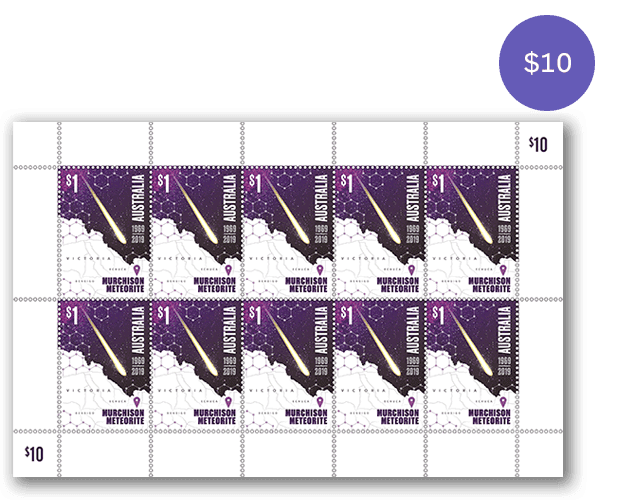
The gummed sheetlet contains 10 x $1 stamps from the Murchison Meteorite: 1969-2019 stamp issue.
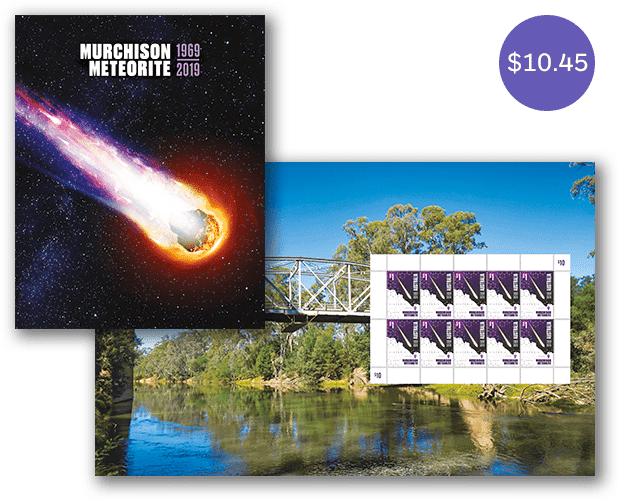
The Murchison Meteorite: 1969-2019 sheetlet pack contains the sheetlet of 10 x $1 stamps from the stamp issue presented in high quality folder.
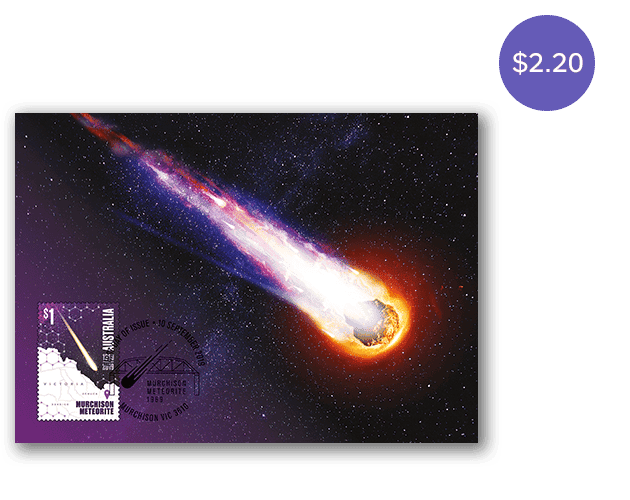
The Murchison Meteorite: 1969-2019 maxicard is a *prepaid postcard with the $1 stamp affixed and postmarked on the view side.
This content was produced at the time of the stamp issue release date and will not be updated.

Issue date: 15 July 2019
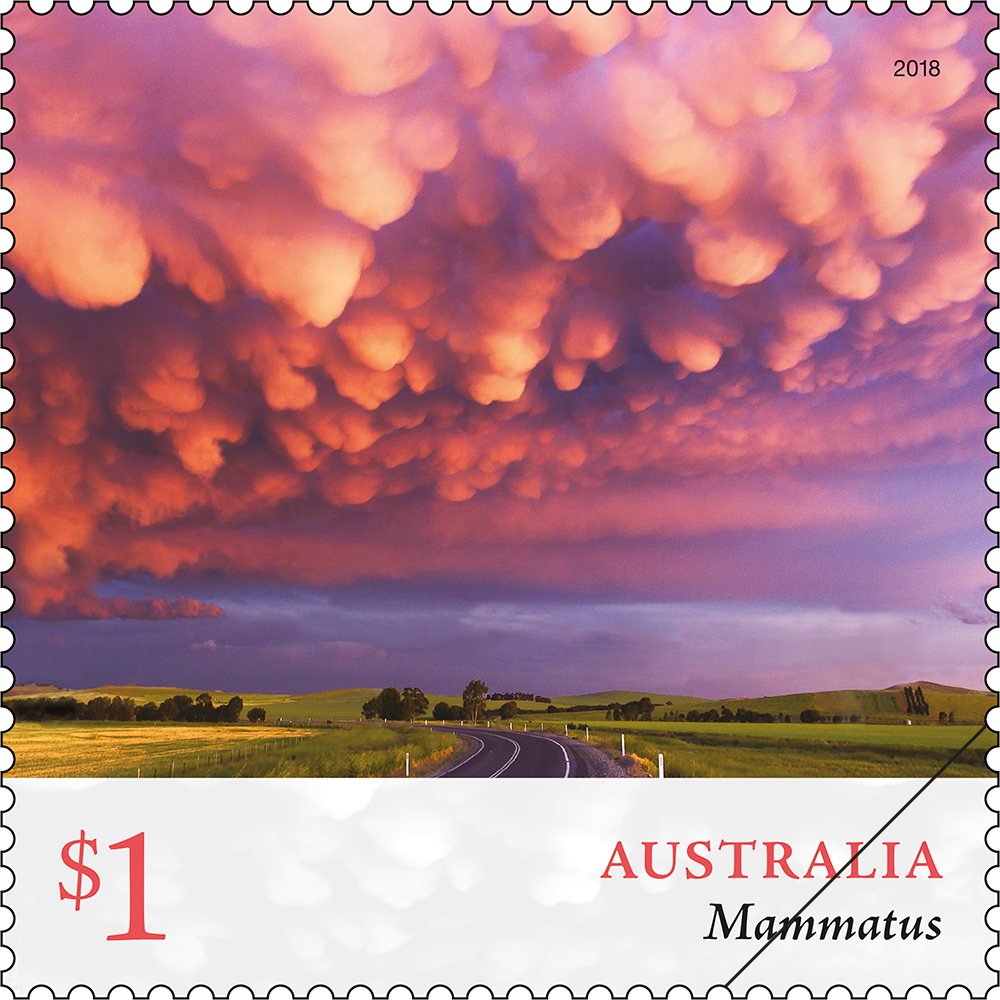
Issue date: 30 April 2018

Issue date: 11 September 2017

Issue date: 21 September 2015